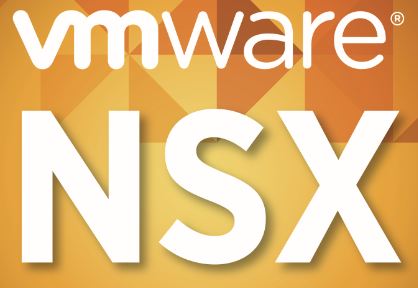On a Journey with VMware NSX Customers
Playing a part in the transformation of the networking industry has been one of the most rewarding opportunities of  my career. On top of that I get the privilege of leading a team that continues to amaze me in their ability to execute. You’ve heard us talk about the more than 400 VMware NSX customers we have to date, 70+ of which are in production. You can safely assume that number is even higher today. Even more impressive is the fact that customers are making significant financial commitments to the architectural changes they are embarking on. In fact, as of last quarter we counted more than 50 organizations that have invested more than $1 million in NSX.
my career. On top of that I get the privilege of leading a team that continues to amaze me in their ability to execute. You’ve heard us talk about the more than 400 VMware NSX customers we have to date, 70+ of which are in production. You can safely assume that number is even higher today. Even more impressive is the fact that customers are making significant financial commitments to the architectural changes they are embarking on. In fact, as of last quarter we counted more than 50 organizations that have invested more than $1 million in NSX.
Now, it’s never easy for IT organizations to talk publicly about technologies they’ve purchased or deployed. This is all the more reason why I’m very grateful that VMware NSX customers have made time to speak publicly about the value they are deriving from VMware NSX to the financial community, at events such as RSA Conference, Palo Alto Networks Ignite and OpenStack Summit, and of course, to the press. No other vendor can claim more customers that are publicly discussing their Continue reading
Using VMware NSX, Log Insight, and vRealize Orchestator to Improve Security
This post was written by Hadar Freehling, Security & Compliance Systems Engineer Specialist at VMware. The post originally appeared here on the dfudsecurity blog
***
There is a lot of power in having security controls in software. This is what I tell my customer, not just because I work for VMware. Why is that? The reason I find it so powerful is that I can now automate a lot of the security actions that use to be very manual. No more opening tickets to get a SPAN setup on the switch. No more waiting for a firewall change window to lock down a port. Not only that, I have visibility into the VM, like what apps are running and who started them, and what’s on the wire. I can protect different assets with different policies, and these polices can be dynamic.
With the help of my good friend John Dias (vRealize Orchestrator master), we created the follow video to show some of the potential of having everything in software.
Here is the scenario of the workflow. You are a security person and want to stop all server admins and users from launching a putty session once they have RDPed into a server Continue reading
VCDX-NV Interview: Jason Nash On The Network Virtualization Career Path
 Jason Nash is CTO of Varrow, a VMware Partner based out of the Carolinas. Previous to Varrow he was an enterprise architect for Wachovia’s investment bank. Jason has been in enterprise IT almost 20 years and originally started as a network admin working with Cisco gear. He maintains his Cisco CCNA and CCNP certifications. He is one of only a handful of double VCDX professionals, having completed his VCDX-NV last year.
Jason Nash is CTO of Varrow, a VMware Partner based out of the Carolinas. Previous to Varrow he was an enterprise architect for Wachovia’s investment bank. Jason has been in enterprise IT almost 20 years and originally started as a network admin working with Cisco gear. He maintains his Cisco CCNA and CCNP certifications. He is one of only a handful of double VCDX professionals, having completed his VCDX-NV last year.
When did you first start looking at network virtualization?
I started looking at network virtualization three to four years ago. I think before that, when it was just purely Nicira and some of those types of companies and projects, network virtualization was really the domain of the PayPals, the eBays, the Googles. Those types of companies. When VMware acquired Nicira, when Cisco did their Insieme spin-in, we started to see that commercial and traditional enterprise customers were going to have some very good options around network virtualization. We started to weigh our options and we really started to get serious about it over the last 18 months. Network virtualization ramps up right alongside our automation or orchestration practices and projects. So we believe that to do those properly, you Continue reading
Deploying VMware NSX on Cisco Nexus 9000 & Cisco UCS Infrastructure
As VMware NSX gains broader adoption, we have heard many customer requests for guidance to help them run NSX on top of the latest Cisco infrastructure, namely Cisco UCS and Nexus 9000 series switches.
With customers choosing the benefits of VMware NSX along with the Software Defined Data Center (SDDC), the underlying hardware (Ethernet fabric, x86 compute, etc) provides reliable, resilient capacity, but the configuration, state and advanced features move to faster, more flexible software. The requests were for deploying NSX with Cisco infrastructure running in a standard IP-based fabric with the Nexus 9000’s in standalone mode (NX-OS Mode), as opposed to the proprietary ACI Mode. As with any IP fabric, VMware NSX works great with Nexus 9000 as the underlay. The combination of VMware NSX and Nexus 9000 in standalone mode enables the benefits customers have chosen to embrace with the SDDC.
We had previously put out a design guide on deploying VMware NSX with Cisco UCS and Nexus 7000 to help deploy NSX in current environments. Today we are putting out a new reference design for deploying VMware NSX with Cisco UCS and Nexus 9000 infrastructure, providing an easy path to the SDDC while incorporating the latest Cisco Continue reading
VCDX-NV Interview: Ron Flax On The Importance Of Network Virtualization
Ron Flax is the Vice President of August Schell, a reseller of VMware products and IT services company that specializes in delivering services to commercial accounts and the federal government, particularly intelligence and U.S. Department of Defense.  Ron is a VCDX-NV certified network virtualization professional and a VMware vExpert. We spoke with Ron about network virtualization and the NSX career path.
Ron is a VCDX-NV certified network virtualization professional and a VMware vExpert. We spoke with Ron about network virtualization and the NSX career path.
***
The most exciting thing about network virtualization, I think, is the transformative nature of this technology. Networks have been built the same way for the last 20 to 25 years. Nothing has really changed. A lot of new features have been built, a lot of different technologies have come around networks, but the fundamental nature of how networks are built has not changed. But VMware NSX, because it’s a software-based product, has completely altered everything. It enables a much more agile approach to networks: the ability to automate the stand-up and tear-down of networks; the ability to produce firewalling literally at the virtual network interface. And because things are done at software speed, you can now make changes to the features and functions of networking products at software speed. You no longer have to deal with Continue reading
VCDX-NV Interview: Chris Miller Talks VMware NSX Certification
Chris Miller is the principal architect for AdvizeX in Columbus OH. He runs the NSX program from a technical and marketing perspective, including  enterprise pre-sales support and go-to-market strategies.
enterprise pre-sales support and go-to-market strategies.
***
I started my career as a traditional Cisco networking guy. I spent 10 to 15 years as a network architect. But I’d been tracking what was going on in the community, with Open Flow and some of the other technologies. When I saw what VMware was doing, it got me pretty excited. I thought, ’It’s pretty revolutionary what’s going on here.’ I immediately jumped on the opportunity to take part in NSX.
In terms of enterprise customers, we weren’t initially seeing a lot of adoption in the market. Then VMware announced the Nicira acquisition, and Cisco announced what they were going to do with ACI, and heads started turning. I realized, you know, here are two of our largest partners putting their investment dollars behind this technology. And then, when I saw what NSX could do, and the benefits it could bring, it was very clear to me that this was the next wave.
What excites me most about network virtualization is that you essentially don’t have to Continue reading
VCDX-NV Interview: Greg Stemberger
Greg Stemberger is an IT professional who started working in networking in 2000. Working in network operations at Sprint, he managed some of the  largest enterprise networks in the world as the Managed Services Operations Engineer focused primarily on routing and switching. He managed more than 20,000 Cisco devices in his initial role at Sprint. Greg has three CCIEs: in route/switch, security, and service provider. He’s also a member of the first group of VCDX-NV certified professionals.
largest enterprise networks in the world as the Managed Services Operations Engineer focused primarily on routing and switching. He managed more than 20,000 Cisco devices in his initial role at Sprint. Greg has three CCIEs: in route/switch, security, and service provider. He’s also a member of the first group of VCDX-NV certified professionals.
What excites you about network virtualization?
Virtualization is actually nothing new to me, to be honest, because I’ve been dealing with multi-tenancy, which really in my mind, started on the WAN side where VPNs were really one of the first early versions of introducing multi-tenancy and segmentation of the network, and leveraging virtualization-type technology on hardware. It’s just fascinating to see how much that’s evolved and taken off in the compute world. Now, we’re coming back together full circle with SDN. The network is now playing catch-up with how much agility and flexibility virtualization has provided to the compute world. I believe I have been doing virtual networking for a number of years now, but obviously it’s morphed into something much more powerful Continue reading
VMware NSX Ninjas – VMware TAM Services
VMware Technical Account Managers combine deep expertise with insights from successful implementations to provide unparalleled value to  VMware customers’ business. Curtis Miller is a Technical Account Manager for VMware and in this post, which originally appeared on The VMware TAM Blog, he outlines how to help ensure success with VMware NSX TAM Services.
VMware customers’ business. Curtis Miller is a Technical Account Manager for VMware and in this post, which originally appeared on The VMware TAM Blog, he outlines how to help ensure success with VMware NSX TAM Services.
For networking, VMware NSX is a game-changer in the same way VMware vSphere was for data center servers. NSX virtualizes and consolidates legacy networking functionality back into a hypervisor. As a result, adding or changing network capabilities no longer requires the costly replacement of networking gear. It’s all software based—so upgrades are now just a right-click away.
The resulting cost savings are dramatic because network hardware is replaced far less often and used more efficiently. Deployment times and scalability improve substantially because networks can be created in minutes instead of weeks; and if demand falls, those resources can just as easily be reclaimed. Enhanced security via NSX’s micro-segmentation capabilities is another important benefit as well.
Read Curtis’ full blog here: http://blogs.vmware.com/tam/2015/03/ensuring-success-vmware-nsx-tam-services.html
Roger
VCDX-NV Interview: Chris Wahl
Chris Wahl is a Senior Solutions Architect at Ahead, located in Chicago, Ill. He has more than 14 years of experience as an IT Pro. Chris originally went to school for networking, and has a bachelor’s degree in networking and communications  management. More recently he’s been doing sys admin work in sys admin engineering, architecture, and data center focused projects. His certifications include VMware VCDX #104, Cisco CCNA data center and CCNP router and switch certifications for which he also teaches classes, and several other VMware, Cisco, Microsoft, and HP certifications. He is also one of the first VCDX-NV certified professionals
management. More recently he’s been doing sys admin work in sys admin engineering, architecture, and data center focused projects. His certifications include VMware VCDX #104, Cisco CCNA data center and CCNP router and switch certifications for which he also teaches classes, and several other VMware, Cisco, Microsoft, and HP certifications. He is also one of the first VCDX-NV certified professionals
What excites you about network virtualization?
I spent quite a few of years managing every type of virtualized infrastructure you can imagine, ranging from very small and medium sized businesses, to a 16,000 person enterprise with over 1,000 virtual machines. In every instance, the roadblock was always the network to the point where in the large deployment that I managed, we would just plan that any network change would take three weeks even if it was just a VLAN on a port. We could pretty much guarantee that it would be about two weeks to make Continue reading
Deploying VMware NSX with Horizon
As part of the recent launch of Horizon 6, Tony Paikeday, senior product line manager, End-User Computing, VMware, takes a look at the value proposition of deploying the VMware NSX network virtualization platform together with Horzon.
Deploying VMware NSX with Horizon
VMware NSX, deployed with Horizon, offers a better alternative to securing east-west traffic between VMs, turning data center security from a perimeter-centric view to one that gives each individual desktop VM its own virtual network container – creating if you will, a network of “one.” This approach, also known as micro-segmentation, has been an ideal for network teams, but traditionally unachievable due to the cost, and the operational complexity involved. With the number of user VM’s introduced by desktop virtualization, and the sprawl of firewall rules needing to be manually added, deleted or modified every time a new VM is introduced, this has been untenable in the past. With VMware NSX, we have a completely new model for networking and security, delivering virtualization of the network, much as we did for server virtualization – reproducing it in software, with a logical library of networking elements and services including switches, routers, firewalls, load-balancers and more that can Continue reading
Introducing New VCE VxBlock Systems with Integrated VMware NSX
Last month, we outlined VMware’s vision for helping customers achieve one cloud for any application and any device. We believe the prevailing
model for cloud adoption will be the hybrid cloud, and the best architecture for achieving the hybrid cloud is through a software-defined data center architecture.
The fastest path to building reliable infrastructure for the hybrid cloud is through the use of converged infrastructure systems, and no company has been more successful at delivering on the promise of converged infrastructure than our partner VCE.
Now, the ability to procure and deploy the VMware NSX network virtualization platform with VCE converged infrastructure is about to get whole lot easier.
Today, VCE launched VCE VxBlock Systems, a new family of converged infrastructure systems that will factory-integrate VMware NSX for software-defined data center deployments. The new VxBlock Systems will include VCE pre-integration, pre-testing and pre-validation of VMware NSX, with seamless component-level updates, ongoing lifecycle assurance, and unified single-call support from VCE.
As I wrote previously, VMware NSX already runs great on existing Vblock Systems. Customers today are deploying VMware NSX with their existing Vblocks, and customers will be able to extend VMware NSX environments across their entire Continue reading
VMware NSX Webcast – Creating Agile Networks
You may have seen Joey Logano speed to his first Daytona 500 win this week. Keeping your network in racing shape takes a similar level of  patience, stamina, and quick reflexes.
patience, stamina, and quick reflexes.
Using VMware NSX network virtualization means that you can unlock the full potential of a Software-Defined Data Center, to create and run entire networks on top of existing network hardware, resulting in faster deployment of workloads, as well as greater agility in the face of increasingly dynamic data centers. Watch this overview to learn how VMware NSX reduces the time to provision multi-tier networking and security services from weeks to seconds to win your race.
This one-hour overview of VMware NSX outlines how you can bring virtualization to your existing network, transforming both its operations and economics. You’ll learn how several of the largest service providers, global financial, and enterprise data centers in the world are using NSX to reduce costs and provisioning times to improve agility and establish a new model of network security.
Click here to watch this webcast and find out:
- What the NSX architecture looks like
- How switching, routing, firewalling, load-balancing and other services are managed with NSX
- How overlay networks and logical networks all Continue reading
Network Virtualization at VMware Partner Exchange 2015
VMware Partner Exchange (PEX) is your one-stop shop when it comes to learning about network virtualization and the technology extends VMware’s vision of the software-defined data center. At this year’s event, we are offering both an executive track and a technical track to help partners build their businesses and advance their knowledge, as you take customers on the path to Virtualizing the Network.
If you are a partner that is new to network virtualization, we have a program/learning path where you can send two people to PEX and to achieve their network virtualization competency by attending the 3-Day NSX Install, Configure and Manage Boot Camp prior to the start of the conference. Participants can then attend the free instructor-led VSP-NV and VTSP-NV boot camps during the conference.
If you are a partner that has already achieved your network virtualization competency, and you want advanced VMware NSX technical training, there will be eight advanced technical breakout sessions throughout the conference. The advanced technical breakout sessions cover everything from “Operational Best Practices for VMware NSX” to “NSX Security Deep Dive. Logon to PEX and build your own schedule using Schedule Builder.
Knowing the technical ins and out of VMware NSX and network Continue reading
VMware NSX Loves Hardware
One of the core value propositions of VMware NSX is ability to take advantage of any underlying hardware infrastructure and deliver a fully decoupled virtualized network in software. VMware NSX loves a  good hardware fabric,.
good hardware fabric,.
But that’s not the only hardware VMware NSX loves.
The votes have been cast and counted, and we are pleased to announce that VMware NSX was selected as the winner in the “Best Software Defined Infrastructure” category in the 2015 Modern Infrastructure Impact Awards. The awards were judged by the Modern Infrastructure e-zine editorial staff, in conjunction with users, readers, and industry experts.
The Modern Infrastructure Impact Awards recognize the top products, technologies and services in the essential areas of technology that Modern Infrastructure covers. The award-winning tools are those helping to run enterprise businesses with efficiency and insight — whether they’re used inside the data center or out.
VMware NSX delivers secure network services to applications running in the data center, resulting in instant and programmatic provisioning, fast and highly available infrastructure, and increased security and micro segmentation capabilities.
Read about the award here and to learn more about the business value of VMware NSX visit vmware.com/products/nsx.
Roger
3 Ways To Get Started With VMware NSX
Over the past 12 months, VMware NSX momentum has continued to grow, as we’ve added  new platform capabilities, expanded our partner ecosystem, and of course, had more than 250+ customers purchase NSX for deployment. And as interest in VMware NSX has grown with both customers and IT professionals looking to evolve their careers by adding certification in network virtualization, one of the most common questions that we get is “How can I get started with NSX?.”
new platform capabilities, expanded our partner ecosystem, and of course, had more than 250+ customers purchase NSX for deployment. And as interest in VMware NSX has grown with both customers and IT professionals looking to evolve their careers by adding certification in network virtualization, one of the most common questions that we get is “How can I get started with NSX?.”
We understand that there is a strong demand for individuals and organizations to get their hands on the NSX technology. Many of you are working towards your initial VCP-NV certification. Others of you are exploring NSX as a way to improve your organization’s agility and security while reducing overall costs.
Here are three ways individuals and companies can get started with NSX.
Complete NSX: Install, Configure, Manage Training – for individuals on the NSX career path, we offer “NSX: Install, Configure, Manage” training. We are offering ICM training as part of our On-Demand Curriculum, or you can take a 5-day instructor led course. Here is the detailed course description and class schedule. ICM training is a pre-requisite for VMware NSX certification. Once Continue reading
Schuberg Philis Deploys VMware NSX
• Application Roll Out Reduced from Weeks to Minutes
• VMware NSX Enables Better Agility, Flexibility and Security
Recently I had the opportunity to speak with the team at Schuberg Philis about their successful, production deployment of VMware NSX. As background, Schuberg Philis is an innovative business technology company and an important player in the field of mission critical outsourcing services. The company serves customers across financial services, retail suppliers and utilities, and therefore must comply with the highest international risk management and corporate governance standards, while remaining flexible to evolving customer needs.
The adoption of VMware NSX based network virtualization has transformed the way Schuberg Philis runs its IT. In order to provide 100 percent functional up time of its customers’ critical applications, Schuberg Philis continuously optimizes its infrastructure and processes. However, the company increasingly saw its network as a barrier to increasing business agility.
To solve this challenge and to accelerate application roll out, the Schuberg Philis implemented a software-defined data center environment, and deployed VMware NSX. Schuberg Philis is taking advantage of the VMware NSX platform’s flexibility, security and agility to accelerate the deployment of applications to customers. Schuberg Philis customers now have easy access to Continue reading
OVS Fall 2014 Conference: Observations and Takeaways
Last week we hosted the Open vSwitch 2014 Fall Conference, which was another great opportunity to demonstrate our continued investment in leading open source technologies. To get a sense of the energy and enthusiasm at the event, take a quick view of this video we captured with attendees.
I’ve been thinking about the key takeaways from everything I saw and everyone I spoke with.
First, there’s huge interest in Open vSwitch performance, both in terms of measurement and improvement. The talks from Rackspace and Noiro Networks/Cisco led me to believe that we’ve reached the point where Open vSwitch performance is good enough on hypervisors for most applications, and often faster than competing software solutions such as the Linux bridge.
Talks from Intel and one from Luigi Rizzo at the University of Pisa demonstrated that by bypassing the kernel entirely through DPDK or netmap, respectively, we haven’t reached the limits of software forwarding performance. Based on a conversation I had with Chris Wright from Red Hat, this work is helping the Linux kernel community look into reducing the overhead of the kernel, so that we can see improved performance without losing the functionality provided by the kernel.
Johann Tönsing from Netronome Continue reading
State of the State for Open vSwitch
This week, VMware will be hosting the Open vSwitch 2014 Fall Conference, with more than 200 attendees and nearly two dozen talks on a variety of subjects from a key participants. The full schedule is available here, and we’ll be doing a wrap up of some of the takeaways from the conference a bit later.
For the uninitiated, Open vSwitch is a production quality, multilayer virtual switch licensed under the open source Apache 2.0 license. It is designed to enable massive network automation through programmatic extension, while still supporting standard management interfaces and protocols (e.g. NetFlow, sFlow, IPFIX, RSPAN, CLI, LACP, 802.1ag). In addition, it is designed to support distribution across multiple physical servers similar to VMware’s vDS or Cisco’s Nexus 1000V. See full feature list here
For more information on OVS, I encourage you to check out the OVS website.
In the mean time, take a read about latest Open vSwitch developments in this post on Network Heresy by OVS core contributors Justin Pettit, Ben Pfaff, and Ethan Jackson.
Accelerating Open vSwitch to “Ludicrous Speed”
Roger
Free Seminar – Advancing Security with the Software-Defined Data Center
We’re excited to take to the road for another edition of our VMware Software-Defined Data Center Seminar Series. Only this time, we’ll be joined by some great company.
VMware & Palo Alto Networks invite you along for a complementary, half-day educational event for IT professionals interested in learning about how Palo Alto Networks and VMware are transforming data center security.
Thousands of IT professionals attended our first SDDC seminar series earlier this year in more than 20 cities around the globe. Visit #VirtualizeYourNetwork.com to browse the presentations, videos, and other content we gathered.
This free seminar will highlight:
- The Software-Defined Data Center approach
- Lessons learned from real production customers
- Using VMware NSX to deliver never before possible data center security and micro-segmentation
Who should attend?
People who will benefit from attending this session include:
- IT, Infrastructure and Data Center Managers
- Network professionals, including CCIEs
- Security & Compliance professionals
- IT Architects
- Networking Managers and Administrators
- Security Managers and Administrators
Agenda
- 8:30 a.m. Registration & Breakfast
- 9:00 a.m. VMware: Better Security with Micro-segmentation
- 10:00 a.m. Palo Alto Networks: Next Generation Security Services for the SDDC
- 11:00 a.m. NSX & Palo Alto Networks Integrated Solution Demo
- 11:45 a. Continue reading
Talking Tech Series: VMware NSX Edge Scale Out with Equal-Cost Multi-Path Routing
This post was written by Roie Ben Haim and Max Ardica, with a special thanks to Jerome Catrouillet, Michael Haines, Tiran Efrat and Ofir Nissim for their valuable input.
****
The modern data center design is changing, following a shift in the habits of consumers using mobile devices, the number of new applications that appear every day and the rate of end-user browsing which has grown exponentially. Planning a new data center requires meeting certain fundamental design guidelines. The principal goals in data center design are: Scalability, Redundancy and High-bandwidth.
In this blog we will describe the Equal Cost Multi-Path functionality (ECMP) introduced in VMware NSX release 6.1 and discuss how it addresses the requirements of scalability, redundancy and high bandwidth. ECMP has the potential to offer substantial increases in bandwidth by load-balancing traffic over multiple paths as well as providing fault tolerance for failed paths. This is a feature which is available on physical networks but we are now introducing this capability for virtual networking as well. ECMP uses a dynamic routing protocol to learn the next-hop towards a final destination and to converge in case of failures. For a great demo of how this works, you can Continue reading



